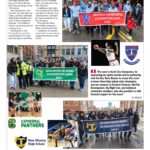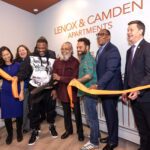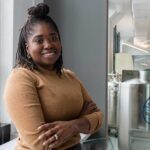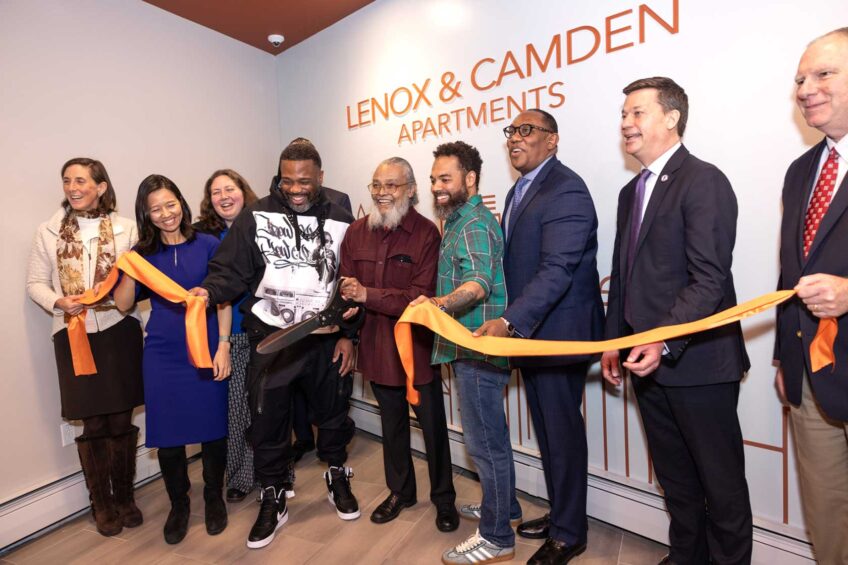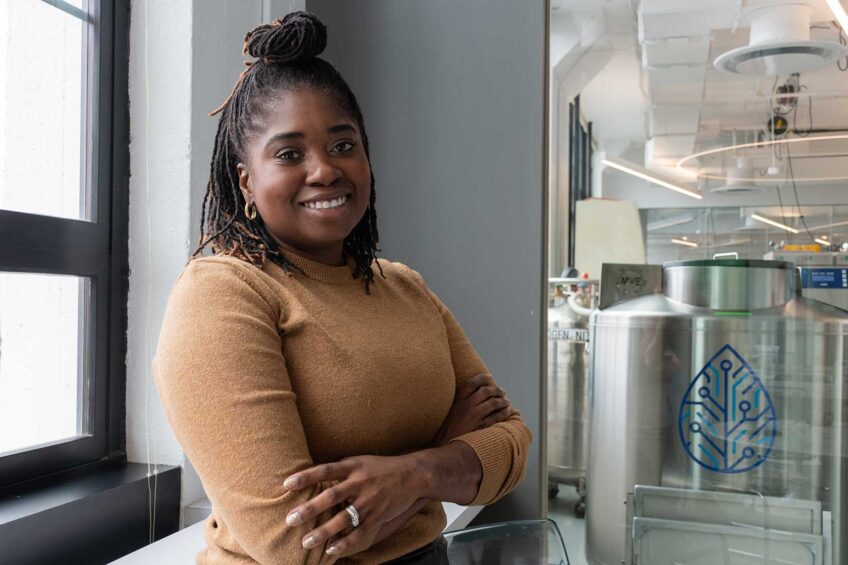
District 8 City Councilor Kenzie Bok introduced an order regarding the future of cooperative housing during last week’s council meeting, using her first address before the body to address what she said are urgent challenges in the city’s housing market.
“Too often we’re making good incremental changes,” said Bok, “but not necessarily moving on the trajectory we need when a problem becomes existential, when the question is whether you’re going to take bold, imaginative, transformative action.”
Bok advocated for a hearing to address the benefits of cooperative housing. She described co-ops as mixed-income, self-governing communities. Co-ops are comprised of multiple units in one building and often provide cheaper housing alternatives for moderate- and low-income residents.
“It should go without saying, but I’m going to say it,” she added. “Boston has to be a place where people can live their whole lives.”
Bok said that she’s a “historian by trade,” and that Boston’s history gave her hope for a future of transformative change. She said that cooperative housing was especially encouraging, since it dots the landscape of her district. It’s a proud Bostonian tradition, she said, and a proven method of keeping Bostonians in the city.
“Our successful large-scale housing cooperatives are much too well kept a secret,” she said. “So I’m calling for a hearing to explore the conditions for their success, and to ask the question of how, as a city, we can support the creation of more cooperative housing at a greater scale.”
Charlesbank, a co-op on the corner of Huntington and Longwood Avenue, was created in 1960. It now serves hundreds of residents in 276 units. Bok said that the development’s 24-story tower was the “heart of Mission Hill.”
Co-ops often include a board of elected members that enforce the building’s bylaws. Bok said that residents of co-ops often have pride in self-governance, or “the knowledge that each of us can join with others to shape the environment that we live in.”
Many co-op members, said Bok, measure their residency in decades, something that’s becoming less and less common in Boston, as many people only last a few years in the city before rising rent prices drive them out.
Bok said that there’s a tension in both the nation and the city between housing as shelter and housing as a form of capital. Lately, she said, the scale has been tipping too much towards capital. Cooperative housing provides cheaper alternatives to families that cannot afford Boston’s escalating prices. But it also provides a community, said Bok, where people can cultivate civic virtue.
In other council business, District 4 Councilor Andrea Campbell addressed a hearing order on the racial disparities in public safety jobs. These jobs do not accurately represent the city’s demographics. Boston’s police department, fire department and EMS are overwhelmingly white.
“Currently, the city of Boston’s residents are 44.9% white, 22.7% black, 19.4% Hispanic and 9.4% Asian,” said Campbell. “Over 55% of Bostonians are people of color, almost 52% are female and almost 38% speak a language other than the language at home. Yet … the public safety departments are overwhelmingly white, male and English-speaking.”
People of color make up a very small percent of Boston’s public service jobs, and diversity has not improved over the years. In fact, Campbell said that the figures have barely changed at all since 2018.
The data collected in a 2018 study examined BPD, firefighters and EMS technicians. Of the 2,073 BPD officers, 67% were white and 22% were black. Of the 372 EMS technicians, 68% were white and 13% were black. Of Boston’s 1,511 firefighters, 72% were white, 19% were black, 8% were Hispanic and less than 1% were Asian. About 1% were female.
White people were even more disproportionately employed in top-tier ranks. Of the 121 Captains, Lieutenants and Superintendents of BPD, 86% were white and 12% were black. Out of 367 BFD Deputies, District Chiefs, Captains and Lieutenants, 83% were white, 12% were black, 5% were Hispanic and less than 1% were female. There were zero Asians in this category.
Campbell’s report, titled “Diversity in Boston’s Public Safety Agencies: Where We Are Now and How We Can Improve,” was published on Jan. 9 of last year. The report discusses “ten measures the City could take to increase diversity in public safety agencies.”
Campbell said that much of what was in her report is yet to be adopted or moved on.
One recommendation concerns data accessibility. Throughout her research, Campbell realized that the data was not available to the public. Many people hadn’t acknowledged the inequalities because very few people had access to this information.
Campbell also advocated for adequate resourcing of diversity offices. “It is great that the police department, the fire department have diversity offices,” she said. “But they have no staff. They have no budget.”

